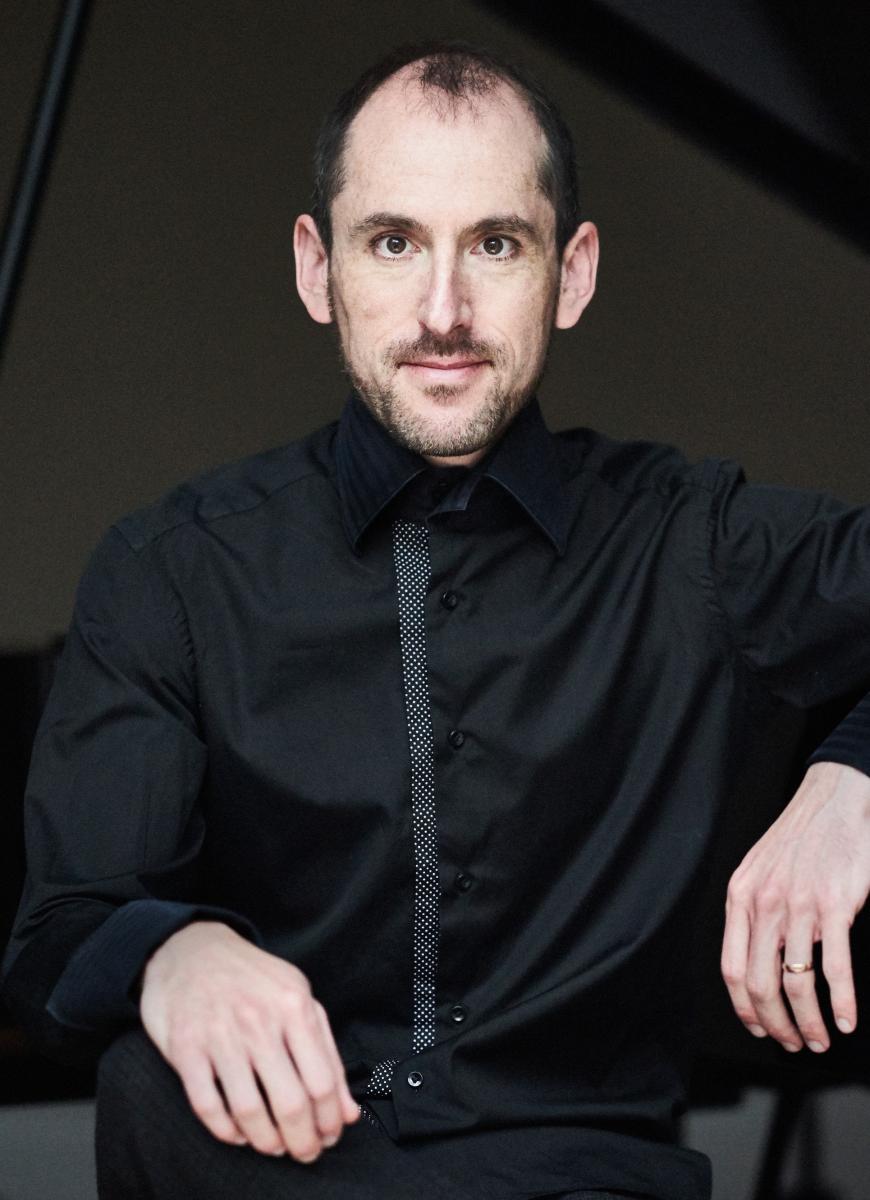
In his Bay Area recital debut, British pianist Danny Driver showed how dazzling virtuosity can coexist with interpretive depth. His Tuesday night concert for San Francisco Performances tackled some of the most technically challenging works in the repertoire. While he catapulted confidently through reams of arpeggios, scales, and octave runs, he also avoided flashiness or superficiality. Rather, he played with crystalline precision, guiding the listener through structural intricacies and illuminating the connections between pieces with persuasive conviction.
The program was based around two variation sets: Robert Schumann’s Symphonic Etudes, Op. 13, and Gabriel Fauré’s Theme and Variations in C-sharp Minor, Op. 73. As Driver explained from the stage, Fauré’s set was based on Schumann’s — they have the same number of movements, the pieces are in the same key, and both end with a variation in the parallel major. The Fauré set (composed later) came first on the program, along with a selection of the composer’s shorter pieces— a prelude and two barcarolles.

Driver displayed remarkable control of complex textures, allowing the melody to stand out from the accompaniment without letting any subtle details get lost in the muddle. When a chromatically snaking countermelody emerged in the Barcarolle No. 4, each note was perfectly, satisfyingly placed. The Op. 73 set of variations was rendered briskly and with attention to Fauré’s often contrapuntal writing — in this way Driver highlighted the work’s antiquarian character, connecting it to César Franck’s Prelude, Chorale, and Fugue, which rounded out the first half of the program. Although Driver managed to avoid the sentimental gauziness that often haunts interpreters of French music, his playing, light on rubato, was slightly too matter-of-fact; a bit more languor and breathing room between variations was needed.
Driver brought the same seriousness of purpose to his rendition of the Prelude, Chorale, and Fugue, a fiendishly demanding piano work that dresses a Baroque form in richly shimmering roulades of thick texture. Undaunted by waterfalls of notes, he took brisk tempi, plunging ahead through searching, improvisatory passages in the Prelude and treating Franck’s digressions in the Fugue with a stern and somber character. He executed precarious hand crossings deftly, the left hand delivering precise, bell-like, and well-shaped melodies as it hopped into the upper register. Even cascading runs were imbued with a deep sense of philosophical import.
If the Franck wasn’t dazzling enough, Driver concluded the concert with another behemoth of the piano repertoire, Schumann’s Symphonic Etudes (really a set of variations which contain a rich assortment of pianistic effects). Schumann’s writing for the keyboard is perfectly suited to Driver’s unification of technical display and contemplative expression. The composer was interested in depicting a diversity of imagery and characters in his music through the figures of his two alter egos, Florestan and Eusebius.
Driver’s astonishing dynamic control came in handy here: Loud passages projected forcefully while never crossing into harshness, and subdued passages like the flitting right-hand staccatos in Etude 3 were played with breathtaking panache. Dotted rhythms in Etude 5 bounced vivaciously, and in the rapid-fire Etude 9, Driver seemed to be pushing the limits of technique. Etude 11 allowed emotional expression to come to the fore; the oscillating left-hand accompaniment was a velvety base over which the bel canto melody soared. And in the Finale, in which Schumann turns for the first time to a major key, pulsating chordal figures had a satisfying propulsive energy; the triumphant ending to the recital was exuberant.
Before the Schumann, Driver opened the program’s second half with some shorter French works. The pianist observed in his remarks that “ambiguity” was a theme of the recital, and two pieces by Lili Boulanger, “D’un vieux jardin” and “D’un jardin clair,” drove this point home, exploring the unstable harmonic landscape that Fauré had begun to approach in his last works. Maurice Ravel’s “Une barque sur l’océan” recalled the nautical theme of Fauré’s barcarolles, and Driver’s lucid rendition revealed new and surprising details in the rollicking texture, leaving no note unaccounted for.



